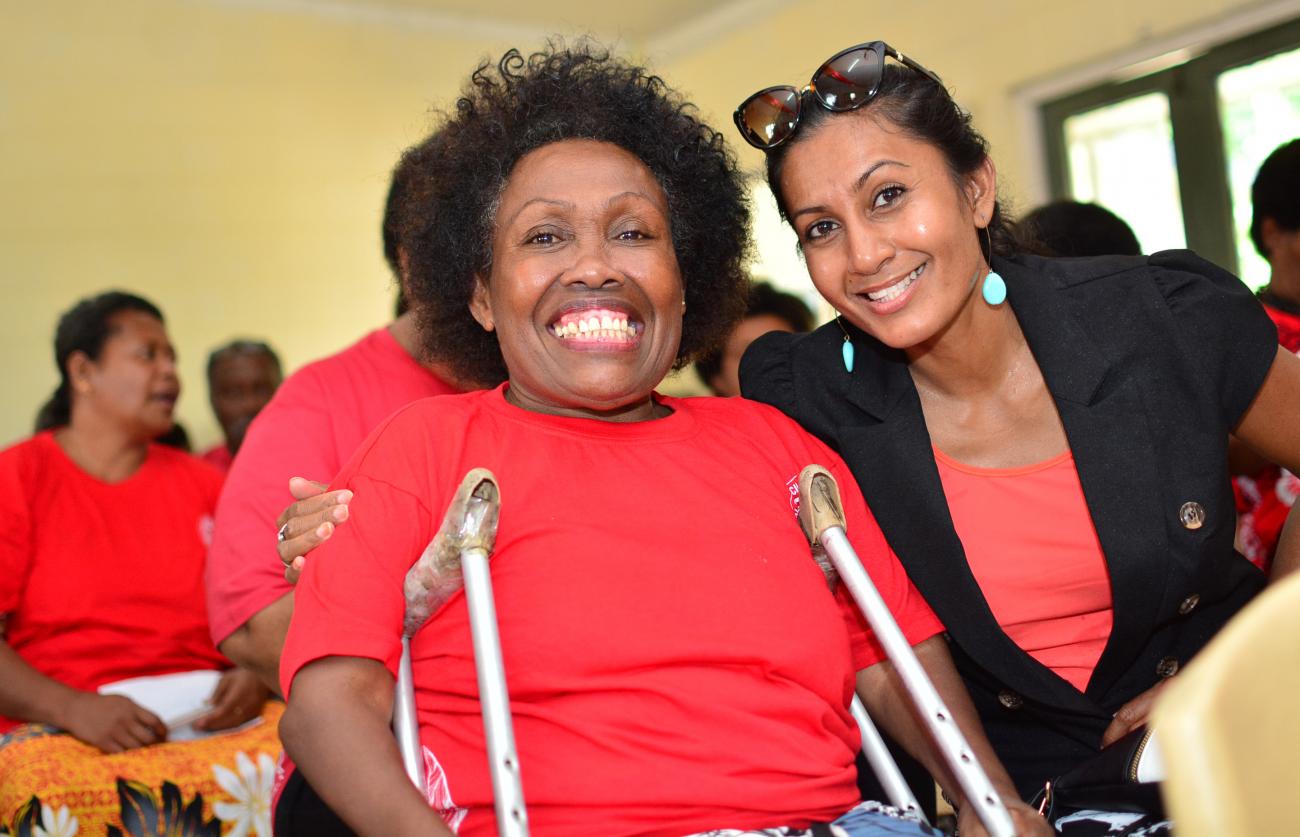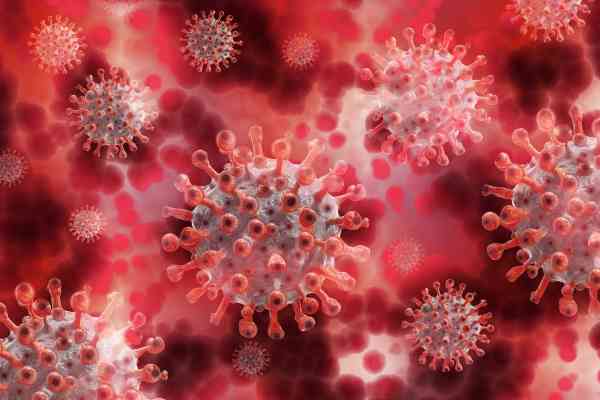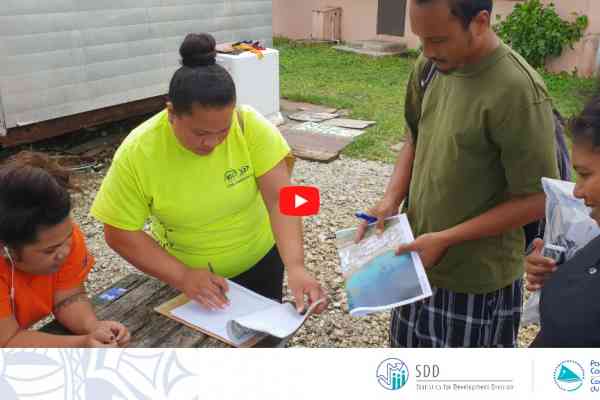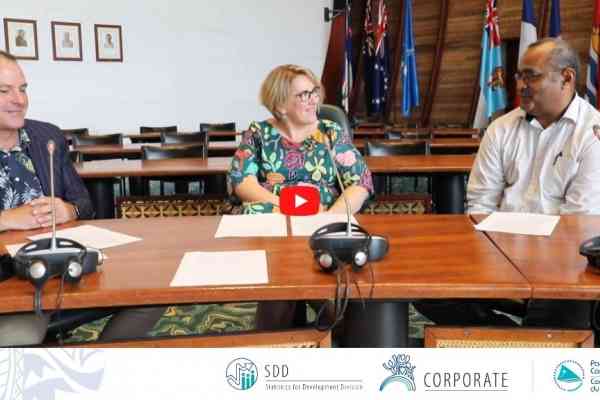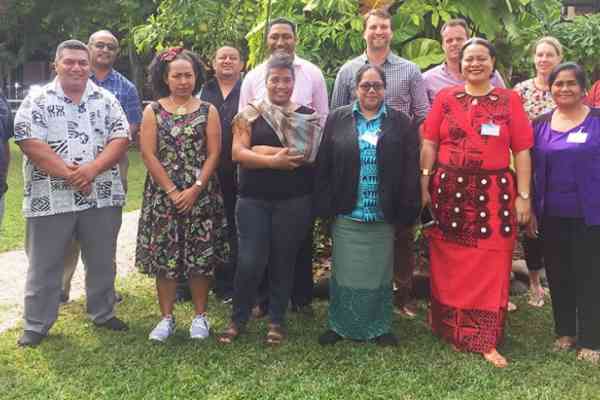Photo credit: Joseva Naisua
Health, disability, gender and employment indicators and data are key for effective policy development in Pacific Islands Countries and Territories (PICTs). Kaobari Matikarai, Census and Survey Officer working in the Statistics for Development Division (SDD) at the Pacific Community (SPC), discusses the work she does to make these data more accessible and comprehensive for users.
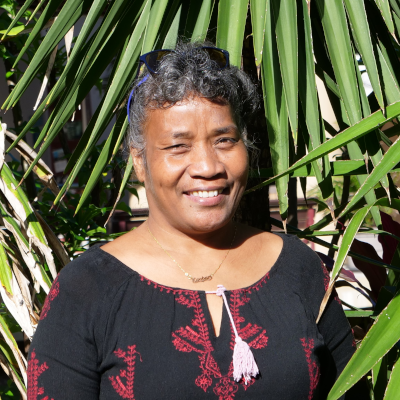 How do SDD’s efforts to make data more accessible figure in your work?
How do SDD’s efforts to make data more accessible figure in your work?
Kaobari Matikarai: My current work is focused on compiling a regional database mostly centred on health indicators such as reproductive health, child health, family planning, nutrition and HIV/AIDS. These indicators are sourced from the national Demographic & Health Surveys (DHS) that have been conducted over the past 10 years in eight countries in the Pacific region. I have also been involved in compiling disability indicators and gender statistics from these DHS and other surveys. My job is now to compile all these national indicators into a regional database so that a regional picture can be seen.
As most of the countries have used standardised tools and methodologies such as survey questionnaires, definitions, and time reference periods during data collection and processing , it is now much easier to regionalise the data. However, this is not always the case as some countries have adapted the methodologies to meet their own particular needs. This can then give rise to some issues of consistency when compiling data at the regional level decisions need to be made on whether and how to include the data or not in the database.
The data on these health and gender issues are often hard to collect as they are very sensitive topics in the region. Questions on these issues particularly women’s reproductive health and experience of violence in their lifetime, have to be asked very sensitively. These data are nevertheless crucial in understanding issues women and men encounter in these areas in Pacific countries.
What is the expected use of this work and why it is important?
Kaobari Matikarai: SDD maintains a state-of-the art interactive indicator database called PDH.stat, which contains a wide range of Pacific development indicators including the Sustainable Development Goals (SDGs).
The objective is now to populate this database with as many regional indicators as possible. So, the indicators for the economic and social data domains that I am working with will be uploaded and fed into our standardised regional database. We are working to compile uniform and harmonised data that can be compared between countries. Countries and development partners can then use this database to track country progress, development and needs both regionally and within individual countries.
There are many different users and uses for these datasets, including governments and institutions, the private sector and civil society organisations, researchers, students, etc. In terms of benefits for them – we are trying to make access to data faster, easier, and more “user friendly”. Instead of looking at many different places, data will be centralised and harmonised in the regional database.
The database will also provide opportunities to maintain and revise the list of indicators once new data is available from each respective country.
Could you give us examples on how your work contributes to the development of the PICTs?
Kaobari Matikarai: The benefits of having quality and accessible data for PICTs are numerous. It is useful for their own development and their policy making, so they can revise their policies based on the information related to gender or health. It’s also a way to build evidence to assist in making good decisions for policy makers. This helps deliver on SDD’s vision of promoting trusted Pacific data to support well informed policy decisions that help improve the lives of Pacific people.
The main positive aspect of PDH.stat is the ability to compare databases from across the region, but also to help improve the whole data ecosystem in the region: within the process we sometimes realise that some of the indicators are not comparable, but countries and partners still need these data. Working on such data helps us identify where the gaps are, what has been done well and what needs to be improved.
Another positive aspect of our work is to encourage the countries to survey different domains which are key to their development. The SDD team is trying to present databases on different domains, including economics (GDP, balance of payments) and social indicators (population projections, labour force indicators, indicators on gender and primary health, etc.) Having access to centralized data in wide ranging domains helps countries get a clear picture of where they are in the process of achieving their development objectives. Moreover, PDH.stat make it easier for development partners to see the trends, see where they need to invest and provide support for the most vulnerable people in the region.
In this period of the pandemic when many families are experiencing increasing hardship and stress it is especially important to have data on the key health related indicators
About SDD:
The Pacific Community (SPC)’s Statistics for Development Division (SDD) plays a key central role in coordinating and supporting the development, production and delivery of official statistics for Pacific Island Countries and Territories (PICTs). This includes a comprehensive technical assistance program across a range of technical areas.
Interview conducted by Camille Menaouer
